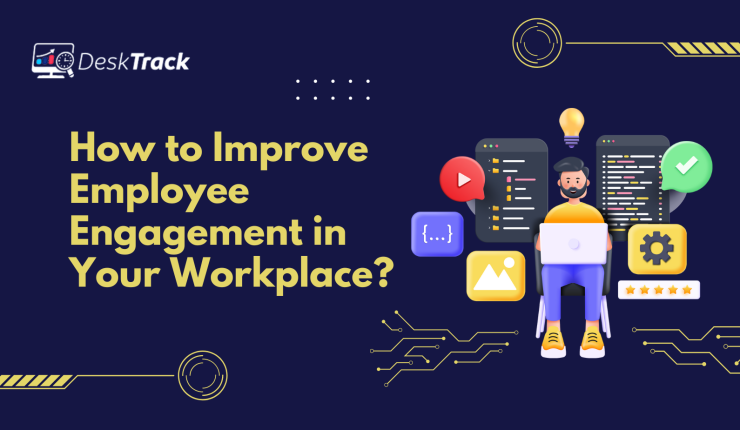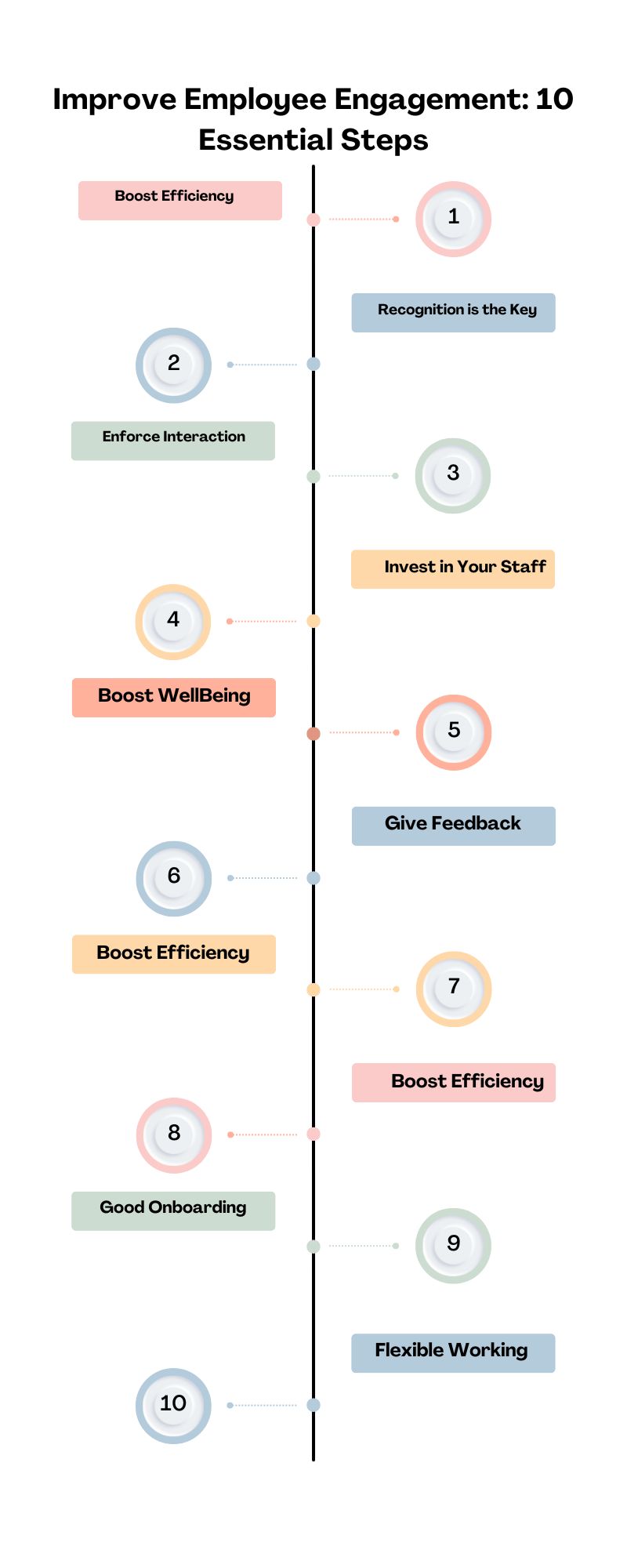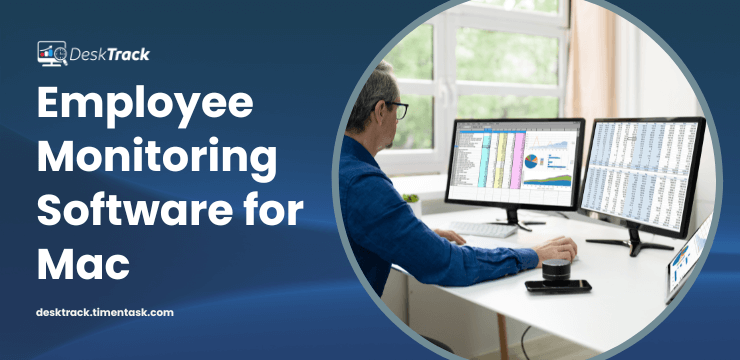
Did you know if you successfully improve employee engagement, then more than 50% of your productivity has already increased? Staff engagement is the most essential factor in making a better workplace.
However, we have seen so far that as per the research, only around 15% of employees are engaged in the workplace. Why is that? We can blame poor workforce engagement management for this.
The usual case is that companies don’t focus on employee engagement that much. However, through this blog, I will tell you why you should make it the top priority. Let’s begin.
What is Employee Engagement?
The more the employee engagement in the workplace, the more their focus and efficiency. Think about it like you are doing anything non-work related. The more you are into it, the more satisfaction you will get.
However, things such as procrastination, burnout, and obstructions will decrease employee engagement. That’s why it’s essential to pay attention to improving staff engagement. Still not convinced? Let’s see what a workplace is like where employees are not engaged.
A Workplace Without Employee Engagement
In this scenario, we are not using any employee engagement solutions. Let’s see what will happen after a few days of that.
Unsatisfied Employees
Employees who do not have enough engagement in the workplace are unsatisfied and will remain so. Even if you give them a long time off or increase their pay, the situation will not change. Ultimately, it will lead to decreased efficiency and productivity.
Staff Work Like Robots
We are humans and we are supposed to work like our kind. However, with the lack of employee engagement, your team members will work like robots, which is not good for your organization. Eventually, productivity will go down, employees will quit due to burnout. The rest, you can imagine.
More Chances of Burnout
Without workplace employee engagement, the chances of your employees experiencing burnout and stress increase. This can lead to more mental health issues and decrease your employees’ well-being.
Long story short, increase employee engagement and lead your company to more productivity and success.
Importance of Employee Engagement
It’s essential to improve employee engagement as it is directly linked to employee satisfaction and productivity boost. As per our research, around 92% of managers and executives believe that engaged team members perform better.
Since, you already know that it will lead to better efficiency, focus on work, and more productivity. Overall, employee engagement & satisfaction is not only beneficial for you and your employees but also for your organization as a whole.
Advantages of Employee Engagement
Companies who implement engagement solutions enjoy many benefits of employee engagement. As per the research, employees who are more engaged put in the extra effort and dedication to help achieve your organization’s objectives. Other benefits include but are not limited to:
- Higher efficiency and better quality work.
- When you improve employee engagement, you save on training costs as employees are motivated to learn and improve.
- As a result, your organization gains more profits and it boosts growth.
Other than that, employee engagement reduces the turnover rate and ensures that your employees stay longer in your organization. However, how will you achieve the most engaged team members?
How to Improve Employee Engagement in 10 Essential Steps

Well, using these 10 strategies and tips will improve employee engagement in your organization to the maximum level. This will ultimately lead to more focus, efficiency, and productivity. Let’s get right into it.
Boost Efficiency
The first step to improve team engagement is to boost efficiency in your employees. One simple way is to make their workload manageable. However, manually doing it is time-consuming, and thus we don’t recommend this method.
Instead, use employee time tracking software to simplify resource allocation and scheduling. Furthermore, it also makes tracking work hours automated.
Improve Communication
It’s a fact that miscommunication in organizations will never improve employee engagement. Thus, eliminate it as soon as possible by training your employees to use the latest communication technology. Overall, when the right information is circulated, there is more coordination and better workflow.
Recognition is the Key
Recognizing your employees for their hard work and efforts motivates them to work even better and put in more effort. Furthermore, workforce engagement software makes this process optimized with insightful details into the working patterns of your staff. This also ensures that your employees including the top performers stay for longer.
Enforce Interaction
The key is for your employees to build interpersonal and professional relationships that inspire them to work together towards a common goal. The aim is to have more flexibility in the workplace. You can simplify this using employee monitoring software.
Invest in Your Staff
Investing in your staff is an investment towards the success of your company. We encourage you to consider the requirements of your employees and get more employee engagement.
Boost well-being
Considering your employees’ well-being is also a good way to increase employee engagement. Keeping their mental health in good condition is another priority. We encourage allowing additional breaks to relax, rejuvenate, and restart work.
Give Feedback
Continuous feedback ensures that employees know where they are lagging and can work on improving performance. Constructive criticism not only boosts employee engagement but also leads to more efficiency.
Good Onboarding
As per our research, you can retain around 82% of employees, if their onboarding experience is good. In the long run, this will lead to more employee engagement & productivity.
Flexible Working
Finally, the most practical strategy to improve employee engagement is this. Your employees need a proper work-life balance. So, why not give it to them via flexible work hours? Studies also show that around 87% of employees expect this from their organizations.
Conclusion
To improve employee engagement, which is how much dedication and involvement your employees are showing towards your company is to boost your organization’s growth. It’s an essential priority that must be considered. Otherwise, employees can experience burnout, will be unsatisfied, and start working like robots, eventually decreasing efficiency. However, boosting staff engagement will give you many benefits, if you implement the best 9 strategies for the same. However, you can’t just get caught in it, since focusing on work strategies is also important. As a solution, boosting staff engagement through DeskTrack can be a perfect choice due to its flexibility, time, and cost-saving features.
Frequently Asked Questions (FAQ)
Q.1 How Can We Improve Employee Engagement?
Ans. Improving employee engagement will lead to increased focus, efficiency, productivity, and many advantages for your company. We recommend you use these strategies for the best results.
- Focus on employee well-being.
- Give feedback.
- Allow flexible working.
- Recognize your team’s hard work.
- Invest in your employees.
- Enforce interaction.
- Boost efficiency.
- Good onboarding.
- Improve communication.
Q.2 What are the 5 C’s of Employee Engagement?
Ans. Improving employee engagement can lead to many benefits such as improved focus, efficiency, and productivity. Experts recommend using the 5 C’s strategy. These are.
- Care about your employees’ requirements.
- Connect with your employees and communicate better.
- Coach your team on using particular resources.
- Congratulate your staff for their hard work.
- Contribute to employees’ well-being.
Q3. Why is Improving Employee Engagement Important?
Ans. The more your employees are engaged, the longer they stay and put in more effort. However, there are more benefits of it.
- The focus and efficiency improve, leading to more productivity.
- Employees tend to improve more daily.
- Better workflow through optimized communication.
- Decreased or eliminated burnouts.
- Engaged employees lead to better growth of your company.
Q4. Which is the Best Software to Improve Employee Engagement?
Ans. There are many applications available designed to boost staff engagement. However, DeskTrack is our top pick. Here’s why?
- The software gives real-time insights into the workings of the employees.
- You get the most accurate performance details.
- This lets you identify how much each employee is involved in an efficient workflow.
- Managers can make the best solutions on the spot to address employee issues.
- Other than that, this software is the complete package with time tracking and employee monitoring features.





